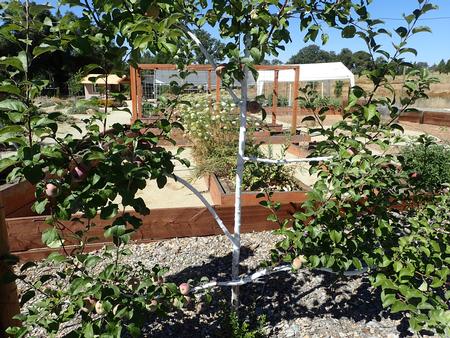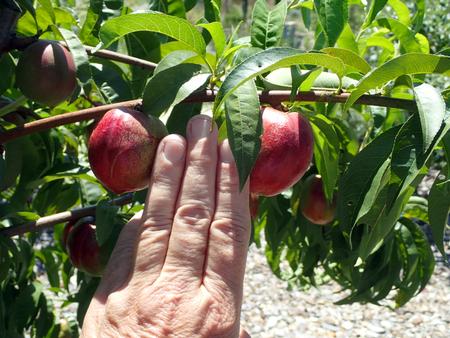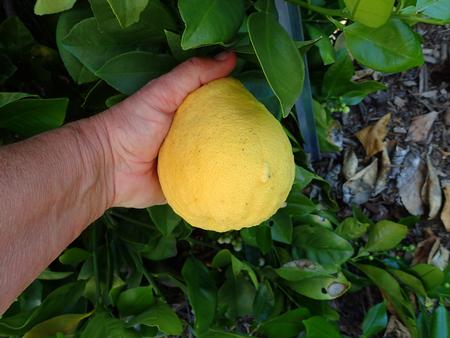Orchard Garden

Objective and Design
EDUCATIONAL POINTS
The Orchard Garden is currently made up of 25 fruit trees consisting of Pome, Stone, Citrus, and more.
- The Pome fruits are apples and a pear: Apples - 6 Liberty apples, an Empire, a Gala, an Arkansas Black, and a Gravenstein
- Pear - Blake's Pride
The Stone fruits are a Nectarine, Peaches, Plums, Cherries, and an Apricot:
- Nectarine - Harko
- Peaches - Lady White, Ranger and Gold Dust
- Plums - Santa Rosa and Green Gage
- Cherries - Rainer Sweet and Lapins
- Apricot - Chinese
The Citrus fruits are all dwarfs consisting of an orange, grapefruit,
mandarin and 2 limes:
- Bearss lime
- Grapefruit- Oroblanco
- Kumquat
- Indio Mandarinquat
- Mandarin - Owari Satsuma
Also growing:
- Fig - purple (unknown, planted by a bird)
- Persimmon - Fuyu
- Pomegranate - Wonderful
The garden features a variety of fruit trees that have been planted widely apart to allow observers an easy view of instruction such as pruning, fruit thinning, etc. around each tree.
Another feature, located next to the Vegetable Garden, are four Liberty Apple trees growing as an espalier. The Liberties were chosen for their bright red apples, which, hanging against the green background of the espalier, should be a scenic attraction.
Yet another feature, coming, will be a "Fruit Salad" tree consisting of multiple Stone fruits. The original fruit salad tree died due to excess soil moisture at the planting site. At the same site, the new tree will be planted in a raised planter avoiding the wet earth beneath. The feature also demonstrates the ability to grow fruit trees in a raised container avoiding undesirable ground and soil conditions.
The grounds around the fruit trees will have a thick mulch, not only for weed control, but to allow foot traffic; e.g., demonstrations, to be free of dirt and mud.
The water conditions will change as the fruit trees mature. Currently, they receive 20 minutes of low volume irrigation twice a week, at 6:30am. When the summer heat arrives, irrigation volume and times may be increased. Soil moisture testing will determine the appropriate requirements. In years to come, as the trees mature and root systems develop, water needs will be less.
All the fruit trees require full sun. As the trees are planted widely apart, they should not, with proper pruning, infringe upon one anothers sunlight.
The educational goals that would benefit our visitors, and each other, can be numerous. Depending on the season, we can demonstrate pruning (fall and summer), fall and winter dormant spraying, fruit thinning (how, when, how much and why), picking (harvesting) the different fruits appropriately. When fruit tree pests are present, another visual educational opportunity will be available (prevention, control and what they look like).
The environmental benefits and ecosystem interactions are pretty simple. All plants convert CO2 to O2 adding to the Demonstration Garden's contribution to the air we breath. The fruit flowers provide pollen and nectar for our bees and butterflies during the spring season. As with all the gardens, the beautification of the weedy landscape that once was. And, given a good harvest of fruit, food for those in need could be provided through food banks.
The Orchard Garden in concert with all of the Sherwood Demonstration Gardens will present an enormous variety of educational values to our visitors. Thank you for your vision Bob.
What's New!




